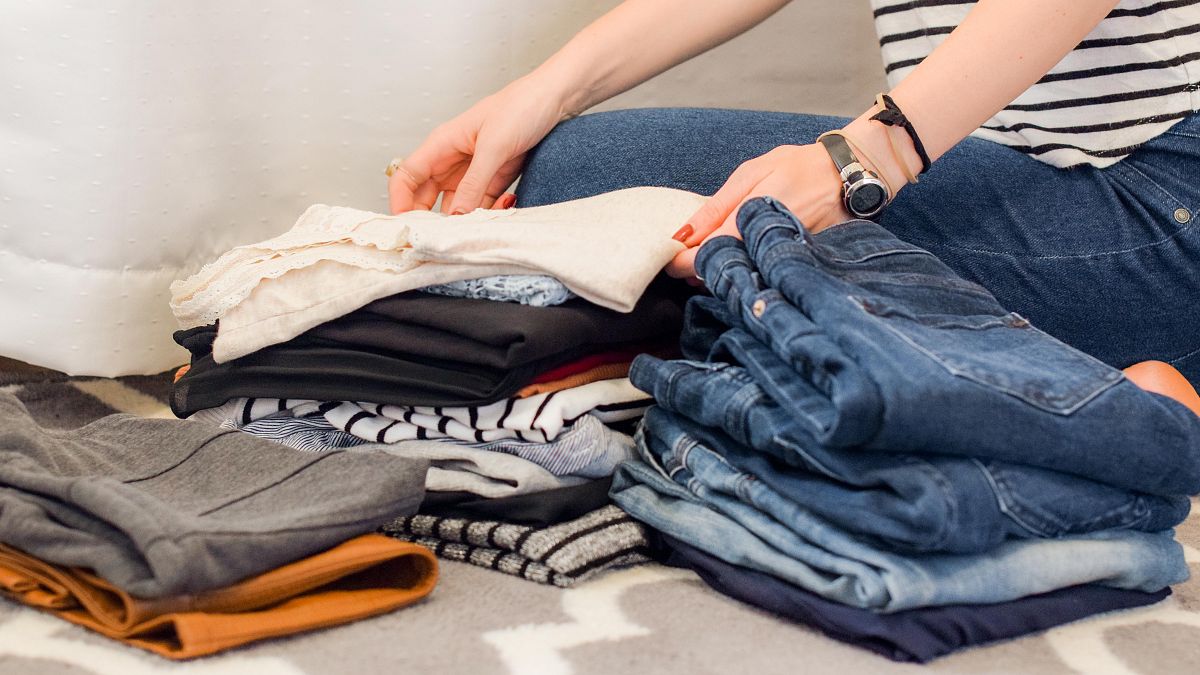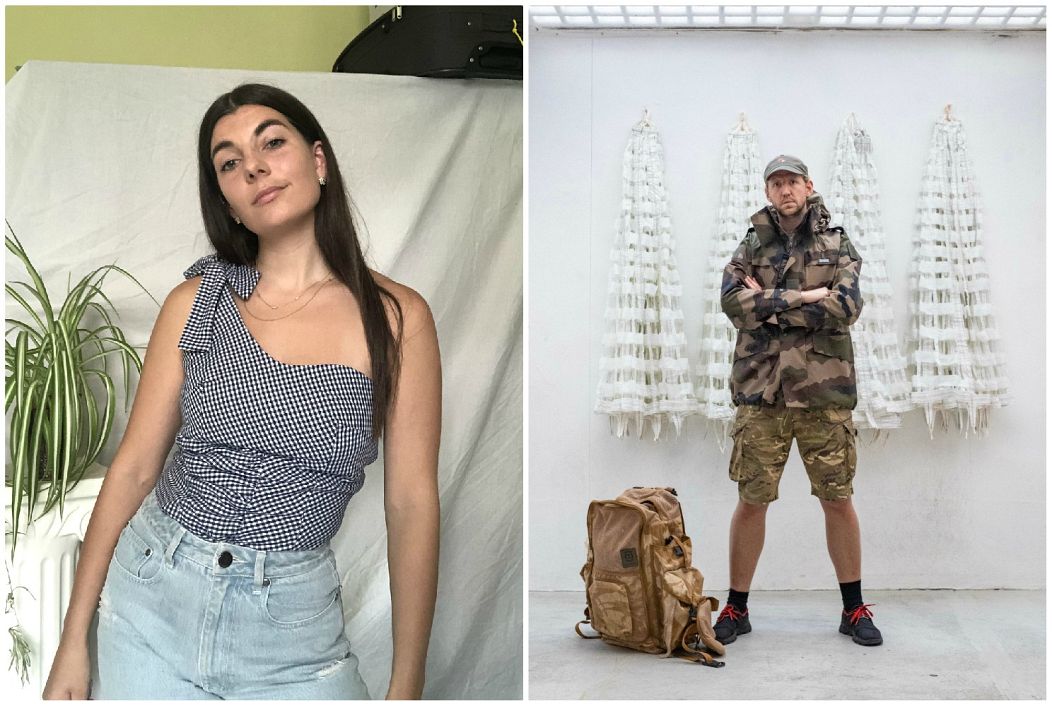How do we solve fashion’s major problem with leftover stock?
Leftover inventory, known as deadstock, has long been a problem in the fashion industry. With brands racing to churn out multiple lines every season, a sea of items remains unsold and metres of fabric unused. Often these are destined for landfill or incineration.
Over the last few years, high-profile stories of household names like Burberry burning unsold stock to protect brand integrity have brought these wasteful industry practices to public attention.
Deadstock is just one layer of a mounting pile of garment and textile waste, as clothes that charity shops can’t sell and those discarded from our own wardrobes also add up. It’s estimated that €150 million worth (around 350,000 tonnes) of used clothing goes to landfill in the UK alone every year. This vast amount of waste is one of the reasons why fashion is among the world’s most polluting industries.
How designers are using deadstock
As one solution to garment waste and overconsumption, innovative designers are sourcing deadstock and unwanted materials to transform them into their own collections – literally bringing deadstock back to life as something new and wearable.
Christopher Raeburn is one of them. But the designer at the helm of RÆBURN, recently awarded the Drapers Sustainable Fashion Award for Brand of the Year (<€32m turnover), never intended to start a sustainable company.
“I started using recycled materials at the beginning of my university life simply because it was a more resourceful way of working and the process interested me,” he explains. “We approach our work with responsibility. It’s about the reworking of surplus fabrics and their functionality above anything.”
Many of the brand’s pieces started life as surplus military items, which Raeburn says he is particularly drawn to thanks to an upbringing spent in the outdoors and his involvement with the cadets. “I quickly developed a fascination for military clothing and original functional fabrics. There’s always been something very exciting about going out and finding original items, then making them into something new.”
Even parachutes designed to be ejected out of military aircraft have undergone the designer’s RÆMADE upcycling process, becoming the signature Air Brake Anorak. “Whether used or unused, the parachutes have a shelf life for security reasons and are decommissioned on an ongoing basis.” With no two RÆMADE products ever identical, Raeburn comments on how “each Anorak is truly special. They’ll include inherent characteristics of the original parachute.”
Buying clothes that benefit the planet
Like Raeburn, Lydia Bolton didn’t enter fashion with the intention of being a sustainable designer either. The industry’s environmental impact wasn’t covered in her Fashion degree course but as someone who always shopped sustainably, she inevitably began thinking about the design process. “As a designer you have a responsibility – if you create sustainable things then people can buy sustainable things.”
After leaving a job as a design assistant, a Centre of Sustainable Fashion course opened Bolton’s eyes to the vast scale of garment waste. This inspired her to start her own luxury streetwear brand using unwanted clothing, firmly founded on a desire to give people “the option of buying clothes that benefit the planet by reducing waste, as opposed to requiring new resources.”
“I went to different charity shops and spoke to them about what happened to the clothing they couldn’t sell,” says Bolton. Staff at TRAID suggested she head to their warehouse where they sort donations. “They have a conveyor belt system and I stood at the end taking things they couldn’t resell in the shops.”
Repurposing old clothes has its challenges. “It’s time consuming in every stage of the production process. Everything is cut one pattern piece at a time, you can’t layer up different pieces in the same way as in normal design, where the cost and the time is split over more than one item. And a lot of time is unpicking the unwanted clothes!”
But the pay-off is creative, unique pieces. When she collaborated with NICCE, using deadstock from their previous collections, Bolton turned scraps of fabric into patchwork trousers. “Every pair is different. Some pieces are reflective, some are black, some are dark navy. They’re one of my favourite pieces because they’re all about using waste. I’m not 100 per cent waste-free but I try to reduce waste as much as I can and this was a great way to do that.”
The impact of Covid-19 and the future of fashion
The Covid-19 pandemic has again brought the issue of deadstock to the fore. Lockdown halted sales and reduced demand with question marks over what will happen to the resulting build up of stock, while donations overwhelm charity shops too. It’s also shined a spotlight on the low pay and exploitation in fast fashion supply chains.
Could this be a turning point for more responsible practices in the industry? Raeburn believes we have reasons to be hopeful. “The last months have evidenced to us all that what we do as an industry doesn’t make sense; a race to the bottom where overproduction and consumption are symbiotic.
“Fortunately an increasing number of brands and individuals are taking stock, and the momentum is growing. We recently put into writing our RÆSTART manifesto; our long-term obligation to challenge ourselves and improve further - and we continue to urge others to join us.”




